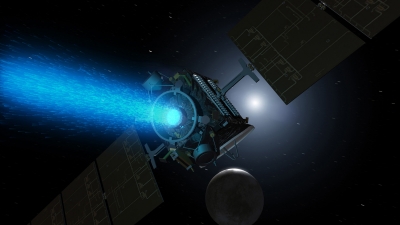
On March 6, 2015, NASA’s Dawn spacecraft entered orbit around the dwarf planet Ceres. With that, Dawn-already the first spacecraft to orbit a body in the region between Mars and Jupiter- became the first to visit a dwarf planet and also the first to orbit two different extraterrestrial objects.
The asteroid belt is a region in the solar system between the orbits of Mars and Jupiter. While there are millions of objects in this asteroid belt they vary size greatly.
The dwarf planet Ceres and the asteroid Vesta are two among these millions of objects. Even though they are a minute portion of the entire asteroid belt when seen based on sheer numbers, they actually account for nearly half of the total mass of this region.
Massive and different
So when NASA decided to study objects in the asteroid belt, these two were worthy choices. Apart from the fact that these two combined to contribute 45% of the region’s mass, they were also chosen because of how little they resembled each other.
Before the Dawn spacecraft went on to be highly successful, the mission was
Before the Dawn spacecraft went on to be highly successful, the mission was technically cancelled twice before it even took off from the ground. The journey was far from smooth following its launch from Cape Canaveral, Florida, on September 27, 2007, but Dawn went on to notch up a number of firsts in a successful mission.
In addition to a trajectory that was carefully charted out, Dawn’s success can also be attributed to the fact that it used an ion propulsion system. Even though the system had been employed only once in a previous NASA mission, this choice provided the engineers with more flexibility to control the spacecraft.
Visits Vesta
The fact that Dawn was boosted by an ion propulsion system meant that it could surpass the previous record for velocity change held by NASA’s Deep Space 1 in 2010. Having achieved an accumulated acceleration over the mission of 4.3 km per second by that point, Dawn went on to reach its first destination, Vesta, on July 16, 2011.
Dawn spent a little over a year in the vicinity of the second-largest inhabitant of the asteroid belt. This time not only allowed the “exotic and diverse” nature of the geological landscape of Vesta, but also helped compile the first map of the 530-km wide asteroid.
Vesta’s layered structure and substantial nickel-iron core, both similar to the Earth, were revealed during this period. Additionally, it was also confirmed that Vesta is the source of the howardite-eucrite-diogenite (HED) meteorites found on Earth and Mars.
When Dawn departed from Vesta in September 2012, it had a near-fatal experience that could have jeopardised its ability to send data back home. The second of the four reaction wheels that it used to steer broke, forcing the engineers to come up with a solution to save the mission. Dawn, in fact, lost three of the four reaction wheels that kept it oriented in space by the time the mission ended in 2018.
The spacecraft was also able to reveal that a giant ice volcano called Ahuna Mons was active as recently as 250 million years ago, putting to rest the idea that Ceres is a dead world.
Dawn became the first spacecraft to orbit two different extraterrestrial objects when it reached its second destination, Ceres, on March 6, 2015. Even though Ceres is massive, spherical, and goes around the sun, it is classified as a dwarf planet due to its inability to clear out its orbit of smaller objects.
Not a dead world
As Dawn went around Ceres – even going as close as 35 km above the dwarf planet’s surface- it was able to discover reflective regions that are now referred to as bright spots. The spacecraft was also able to reveal that a giant ice volcano called Ahuna Mons was active as recently as 250 million years ago, putting to rest the idea that Ceres is a dead world.
Even though Dawn’s primary mission was concluded by June 2016, the spacecraft enjoyed a couple of extensions and was active almost till the end of 2018. By the time it ran out of fuel, Dawn had changed scientist’s opinion about Ceres. As scientists continue their search for life in other celestial objects, Ceres is even considered as a possible candidate for a return mission.
Planetary protection rules dictate that at least 20 years pass before a spacecraft crashes into an object in order to protect any life that may be hiding. As a measure of abundant precaution, the Dawn team decided to keep the spacecraft in orbit for at least 50 years.
Picture Credit : Google




